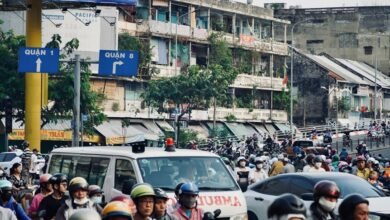Mutf_In: Kota_Emer_Equi_B03q69

Mutf_In: Kota_Emer_Equi_B03q69 represents a significant shift in urban development. It merges innovative infrastructure with sustainable practices, promising a better quality of life for its inhabitants. This initiative prioritizes community involvement and smart transportation solutions, aiming to foster connectivity and reduce congestion. As urban landscapes evolve, the impact of such projects on social dynamics and environmental health raises intriguing questions. What will the future of our cities look like under this new paradigm?
Innovative Urban Infrastructure
As cities evolve, the need for innovative urban infrastructure becomes increasingly paramount, shaping the way communities interact and thrive.
Integrating smart technology within public spaces enhances connectivity and convenience, while the incorporation of green spaces fosters well-being and ecological balance.
This harmonious blend not only promotes a vibrant urban experience but also empowers citizens, encouraging a sense of freedom and community engagement.
Sustainable Building Practices
The evolution of urban infrastructure naturally paves the way for a focus on sustainable building practices, which are integral to creating resilient cities.
By incorporating eco-friendly materials and prioritizing energy efficiency, architects and builders can significantly reduce environmental impact.
These practices not only enhance the quality of life for inhabitants but also promote a sense of freedom, allowing communities to thrive harmoniously with nature.
Advanced Transportation Solutions
While cities evolve to meet the complexities of modern life, advanced transportation solutions emerge as a crucial element in fostering connectivity and reducing congestion.
Smart mobility initiatives leverage technology to create efficient transit systems, while autonomous vehicles redefine personal travel.
Together, these innovations promise a future where freedom of movement and environmental sustainability coexist, transforming urban landscapes into vibrant, interconnected hubs.
Community-Centric Design
Recognizing the vital role of community in urban development, designers increasingly prioritize community-centric design as a means to foster social interaction and inclusivity.
Through participatory planning, they engage residents in shaping their environments, creating inclusive spaces that reflect diverse needs.
This approach not only enhances the quality of life but also empowers individuals, cultivating a sense of belonging and shared responsibility within the community.
Conclusion
In conclusion, the Mutf_In initiative embodies a bold blueprint for brighter, better urban living. By blending groundbreaking infrastructure with sustainable strategies, it fosters flourishing communities while championing connectivity and collaboration. This visionary venture not only nurtures nature but also invites inhabitants to participate in the design of their dynamic surroundings. As cities evolve, Mutf_In stands as a shining symbol of synergy, striving to shape resilient realms where people and the planet prosper together.




